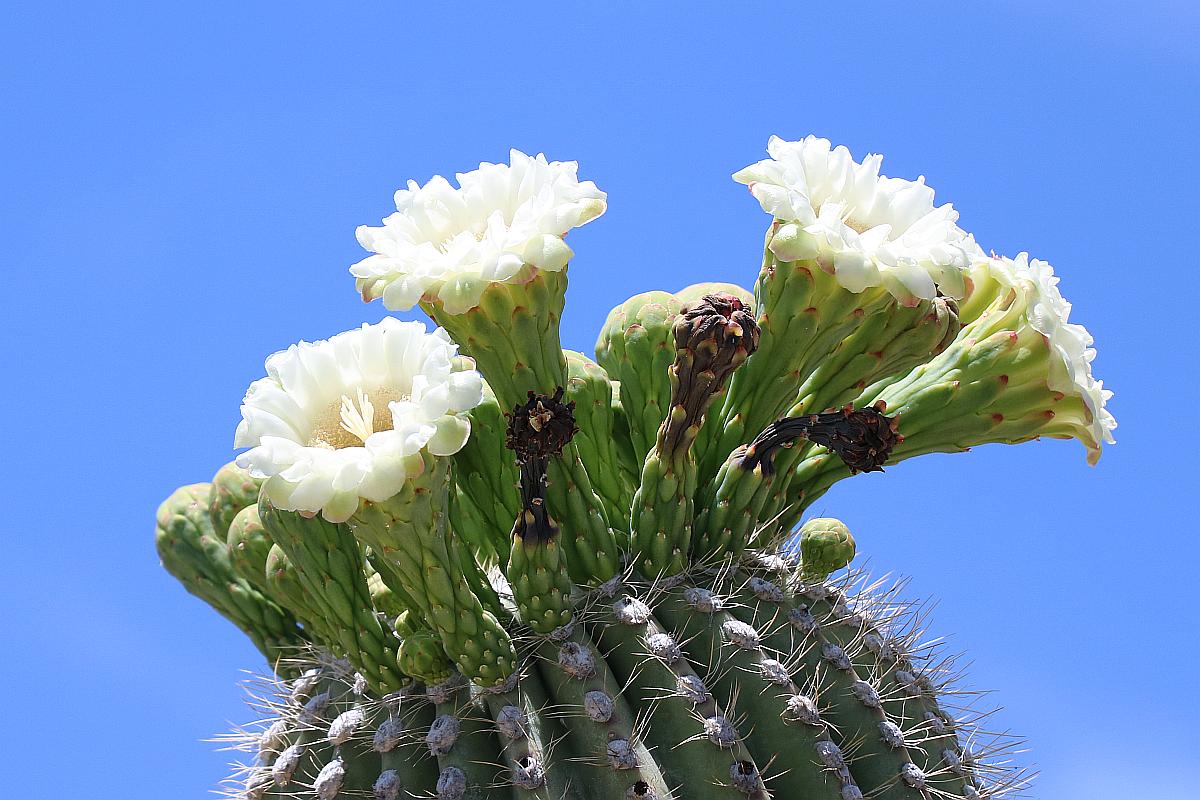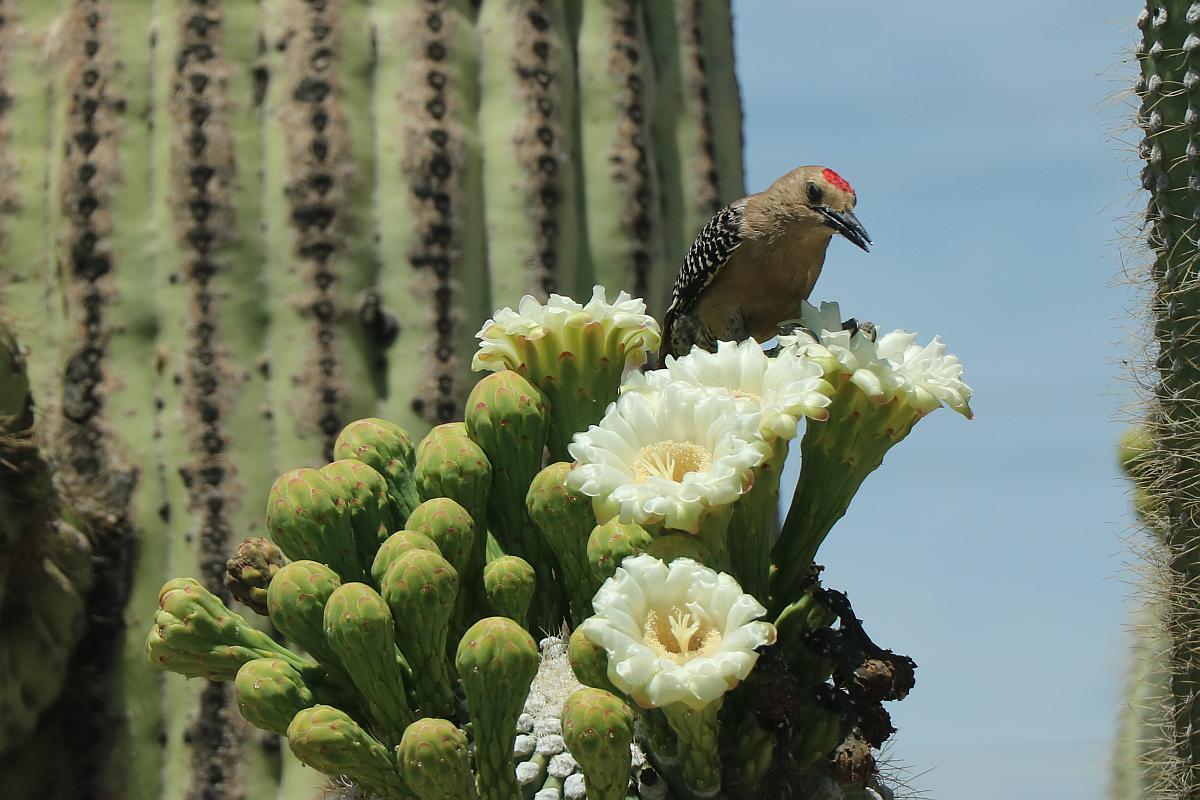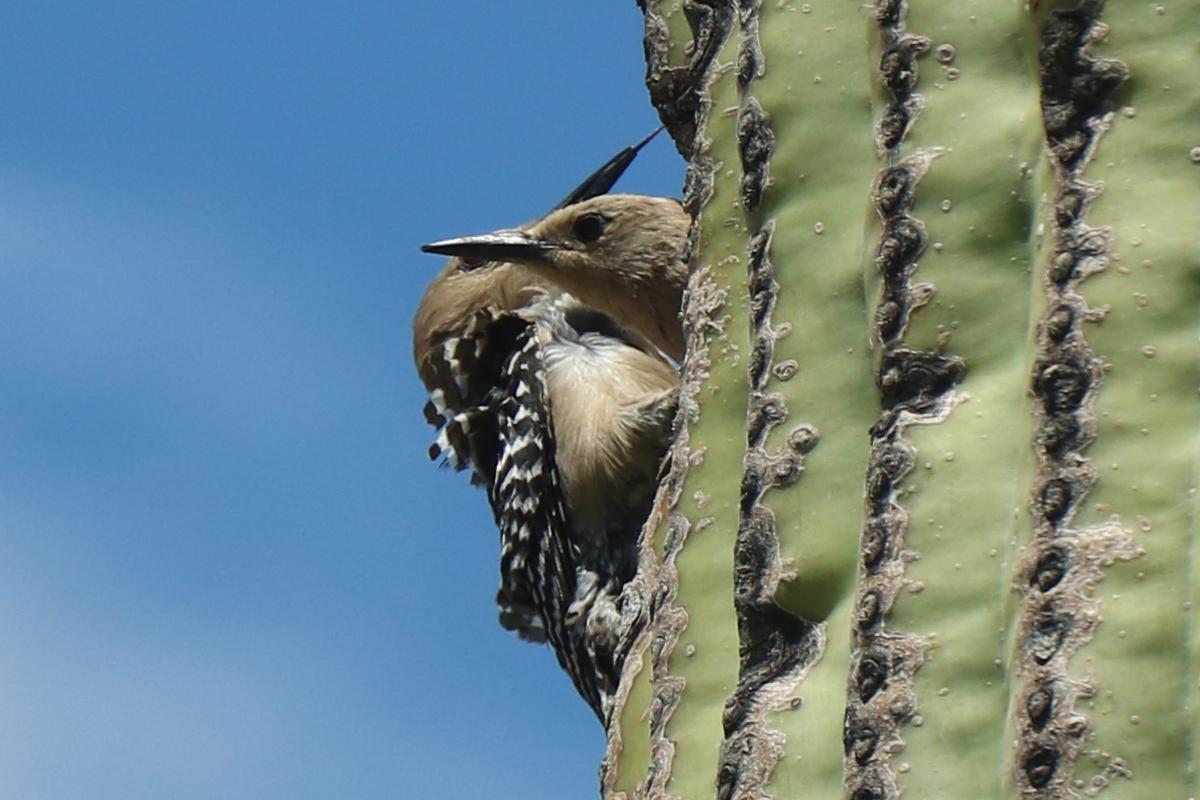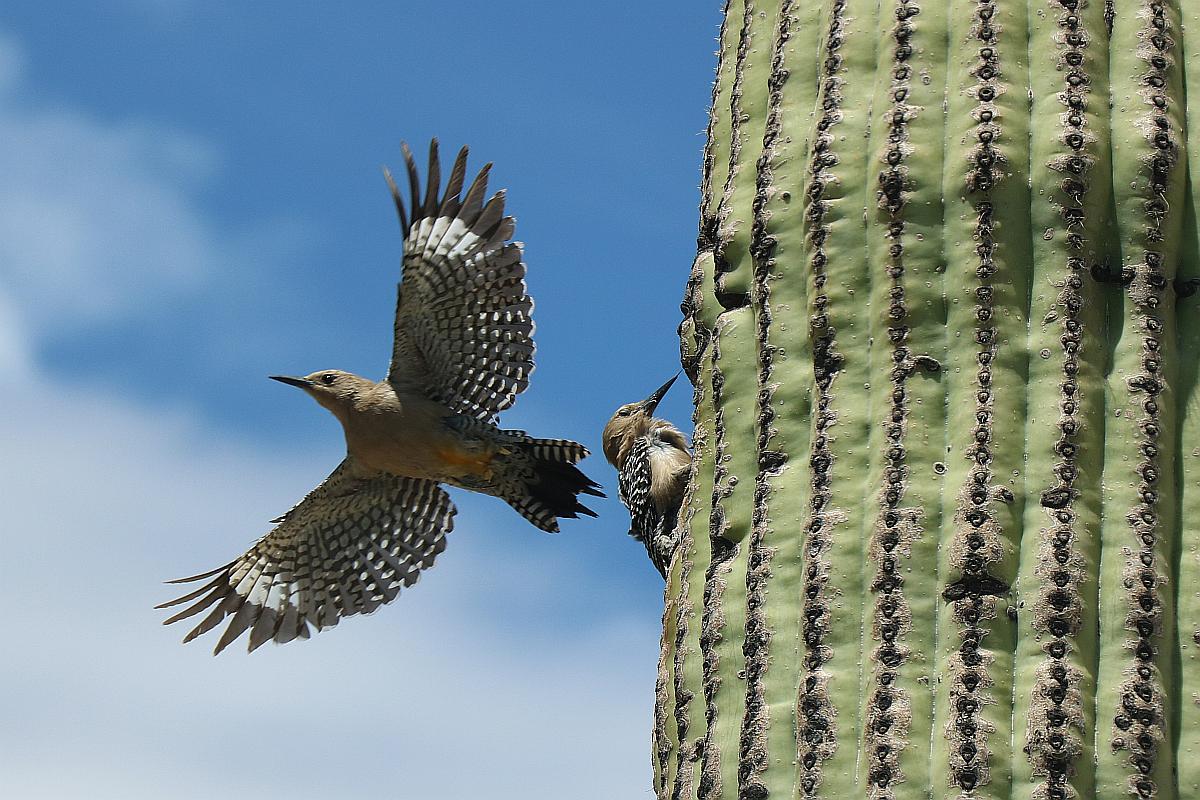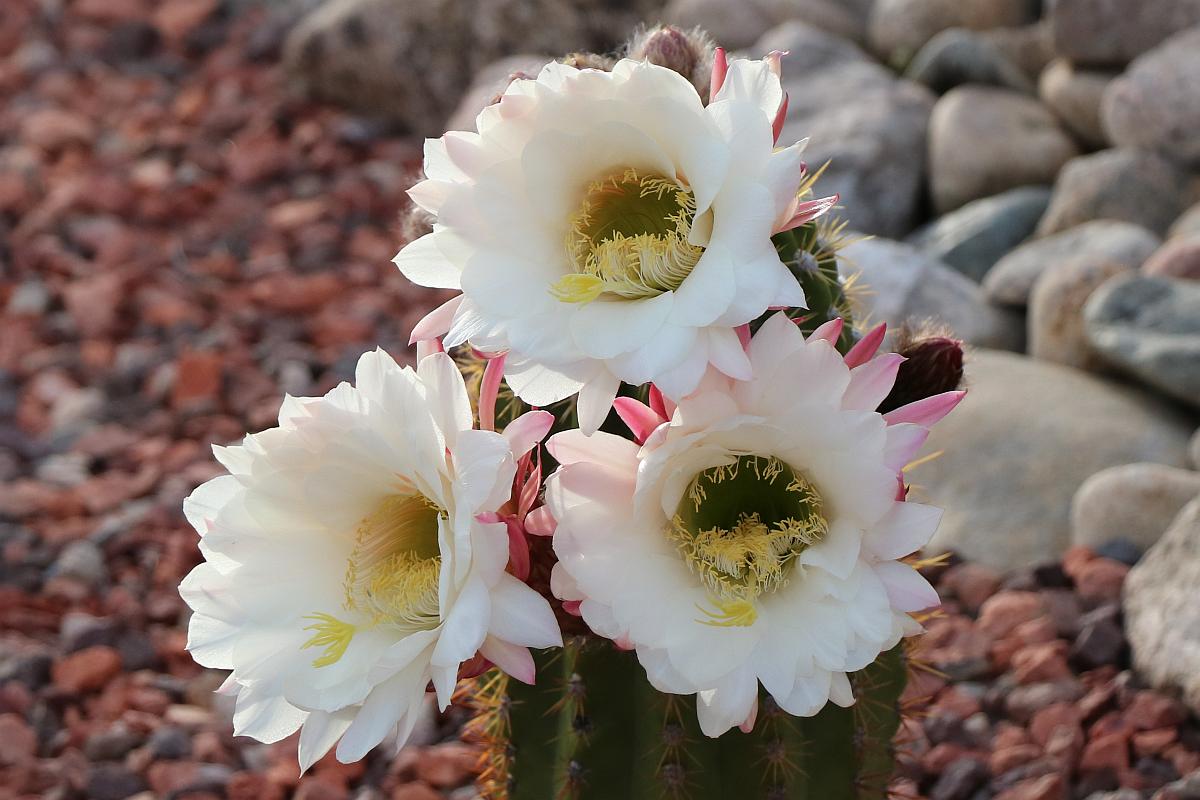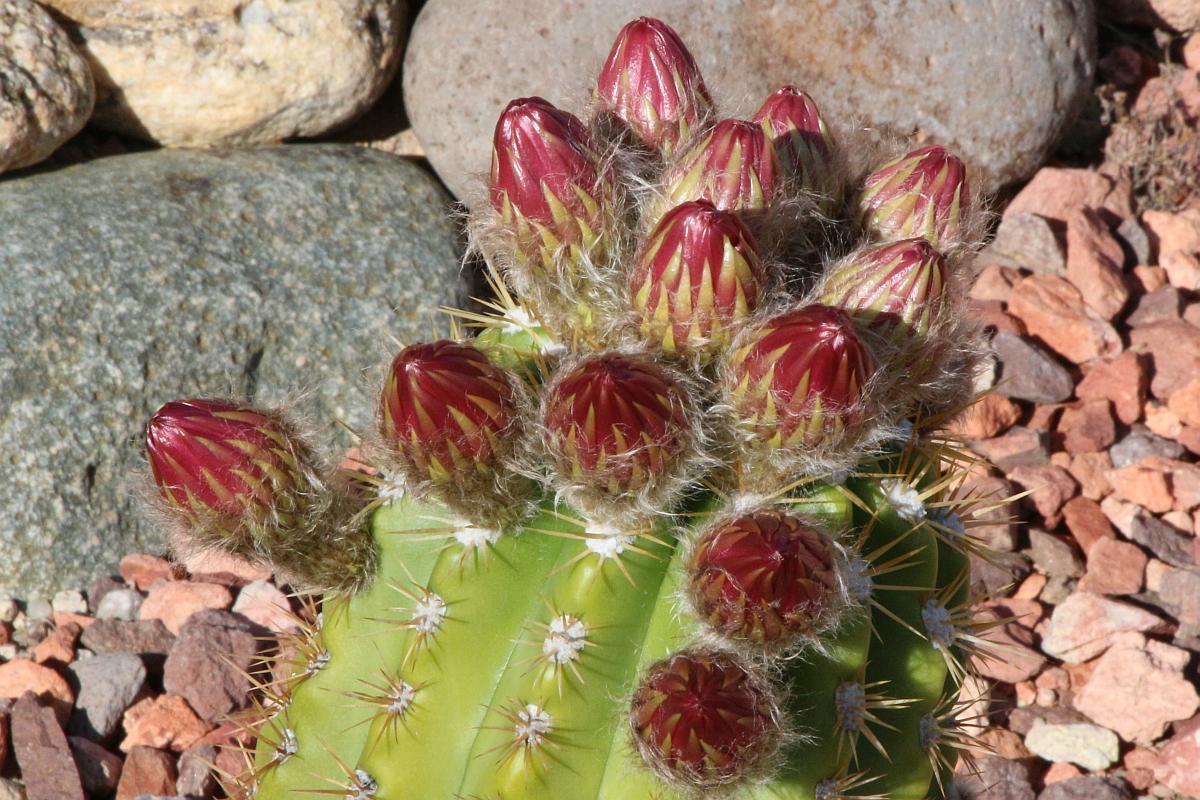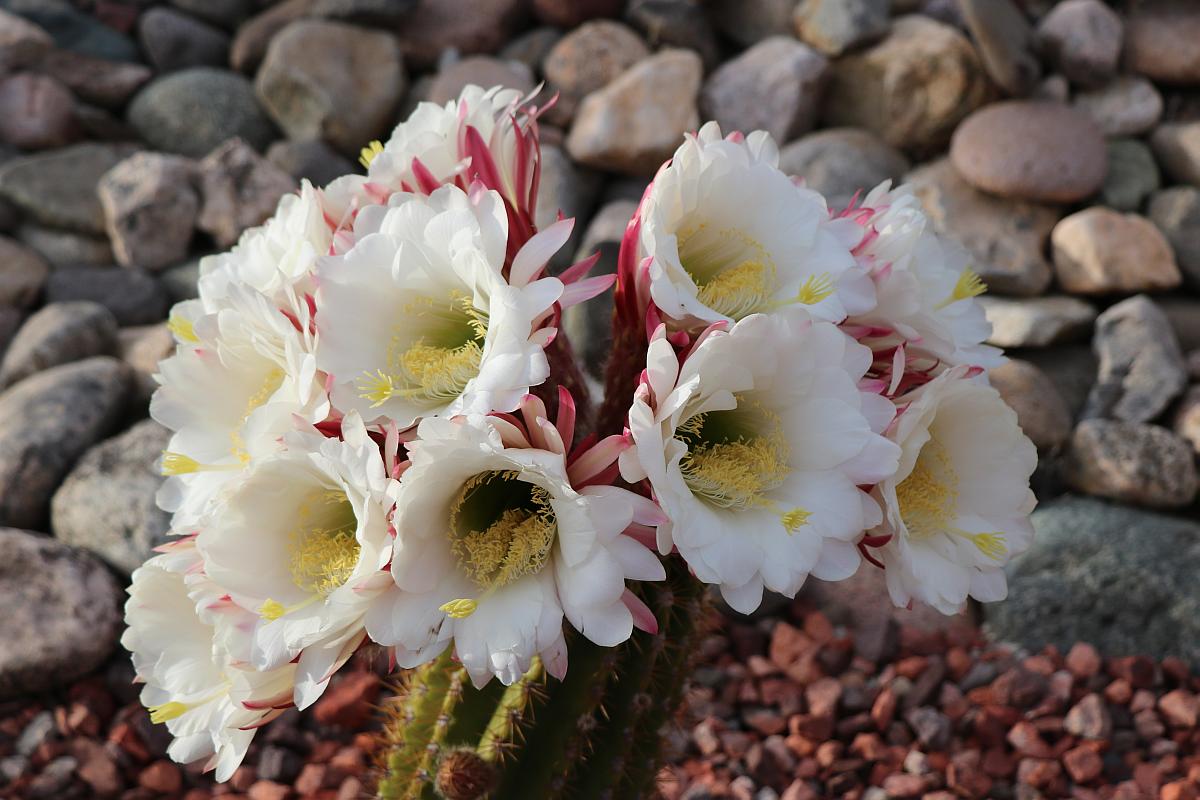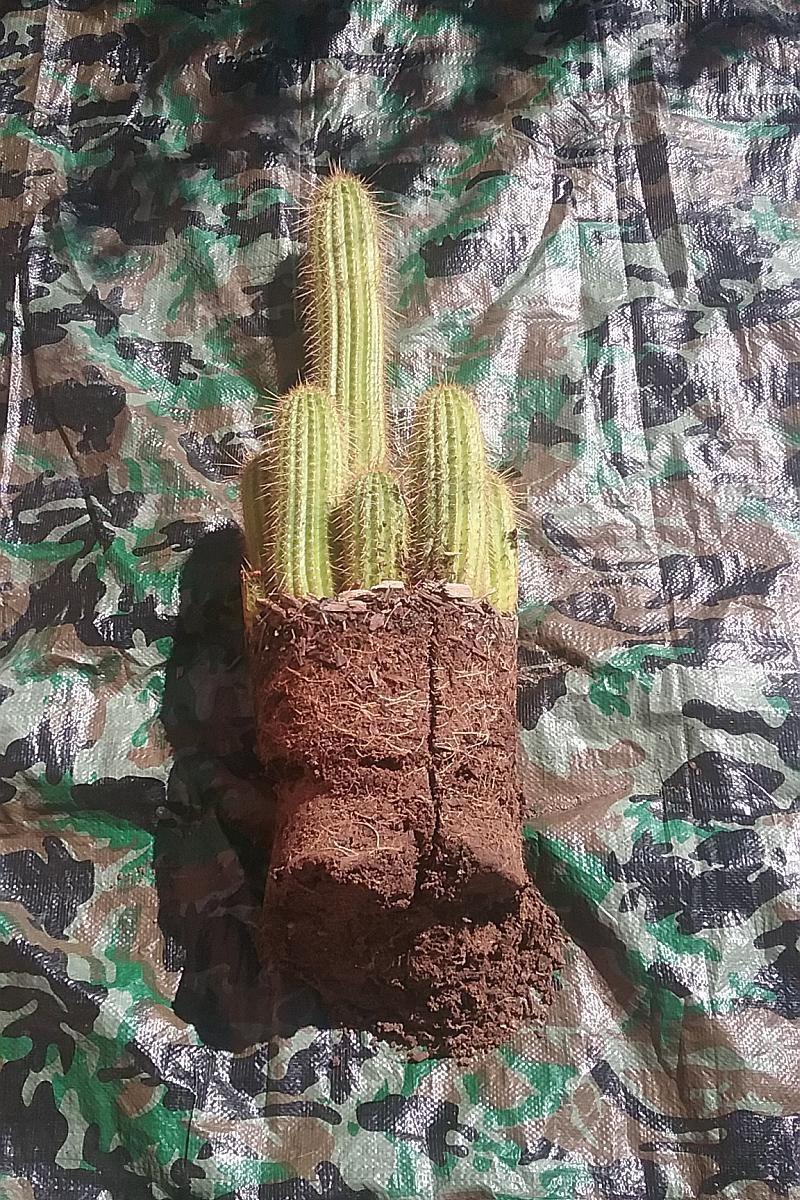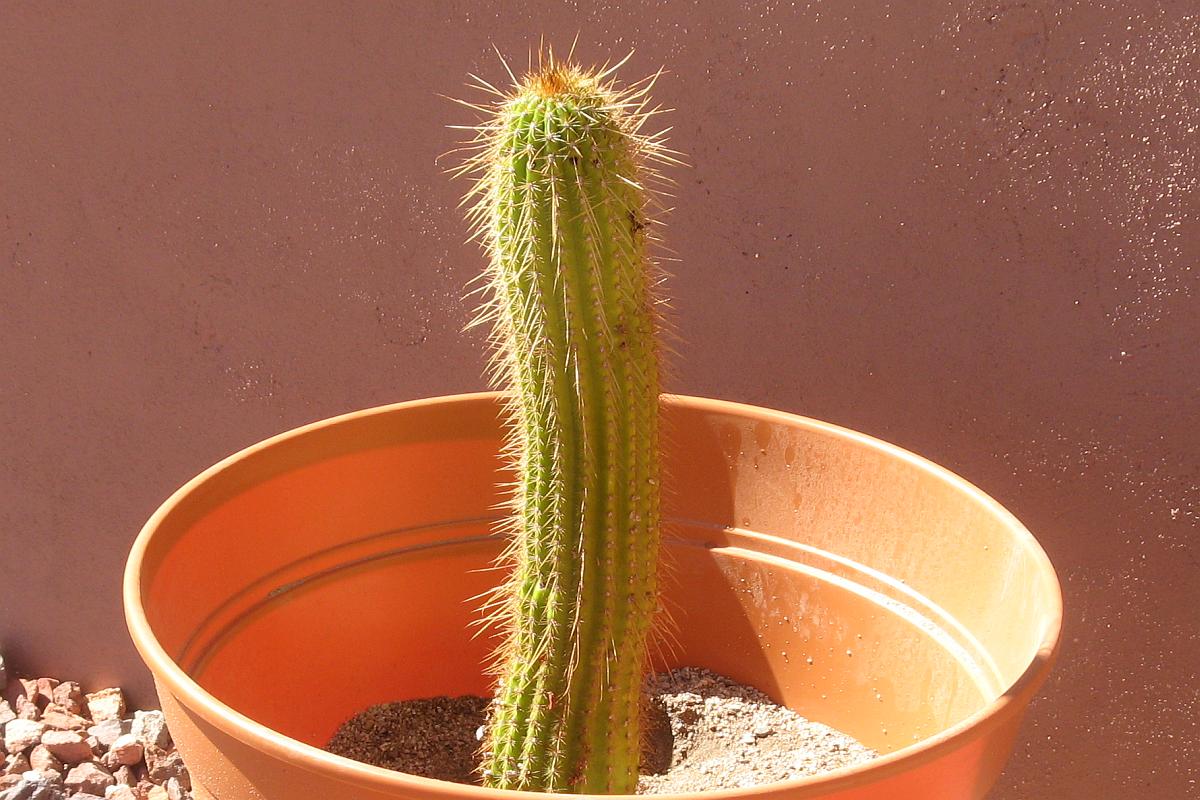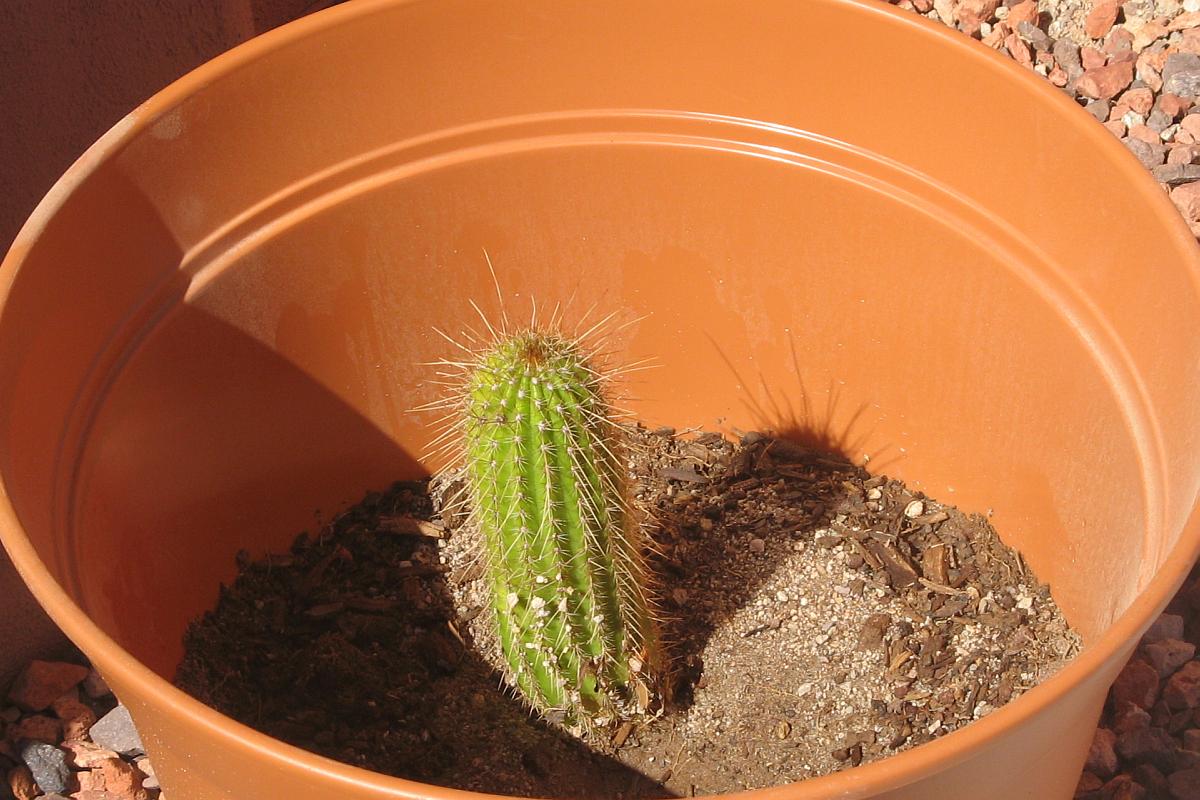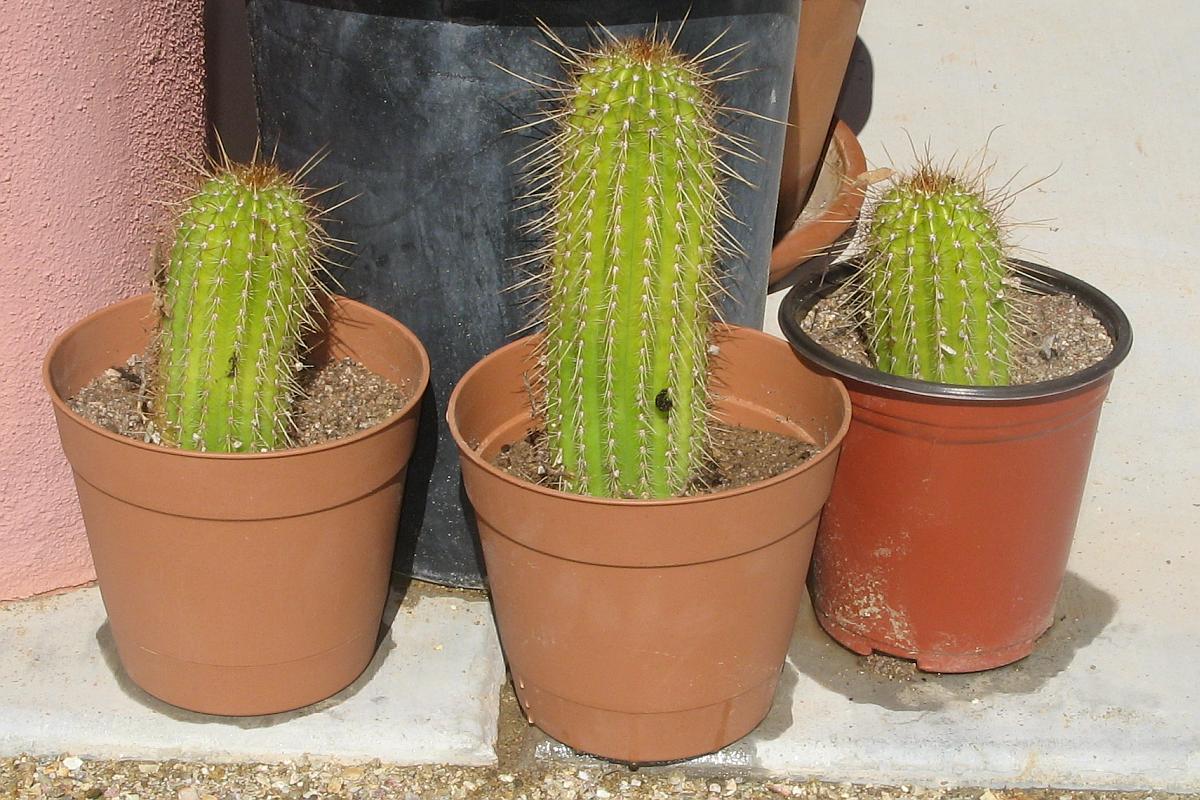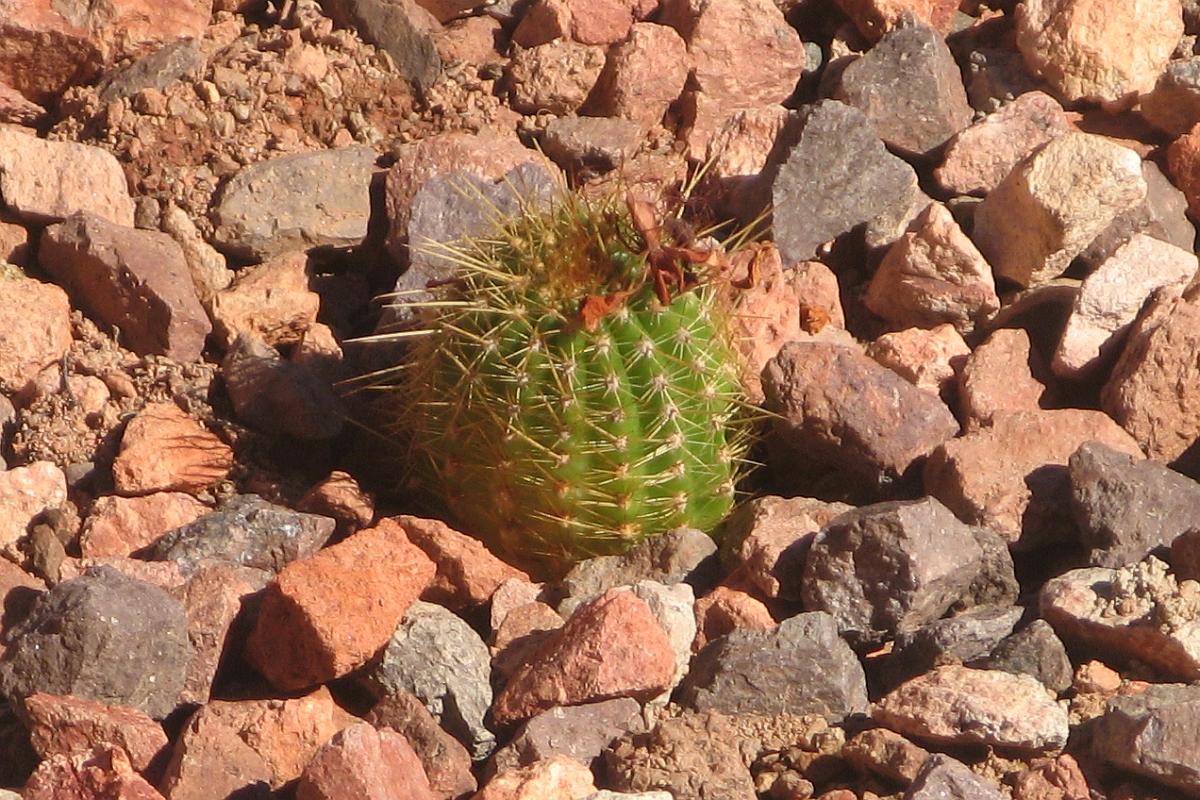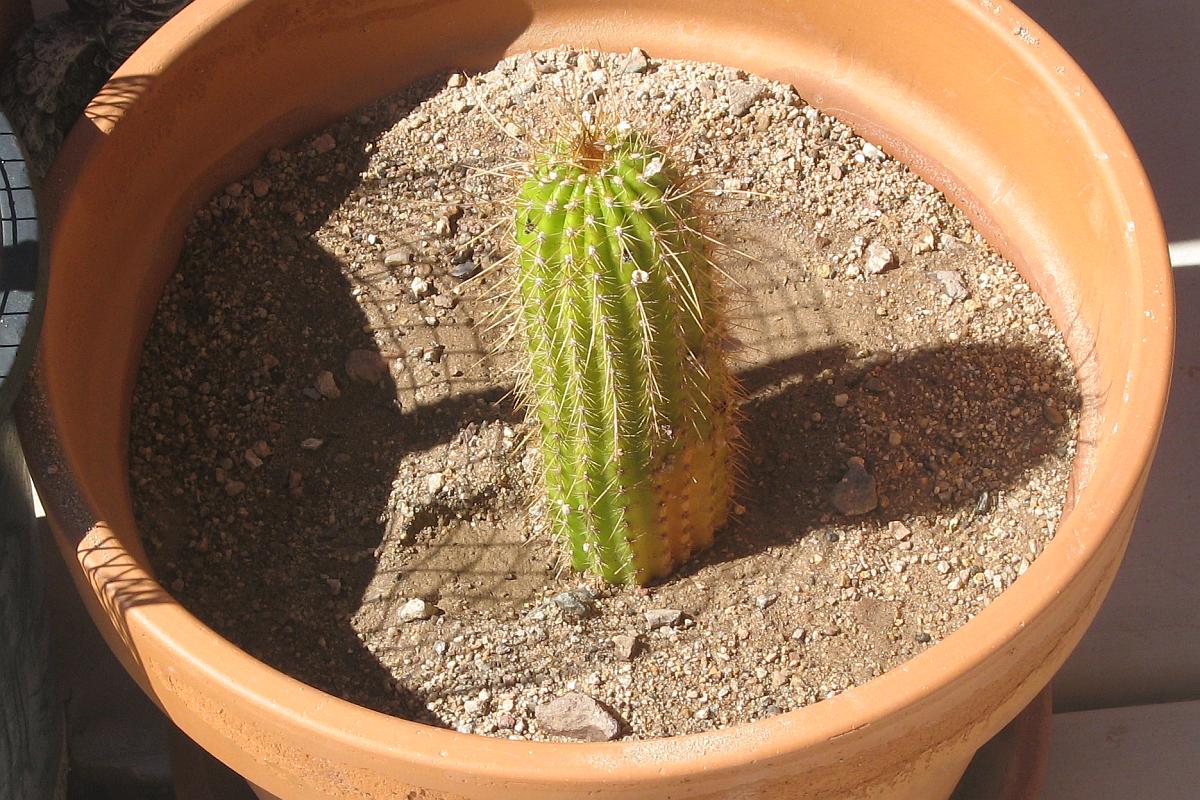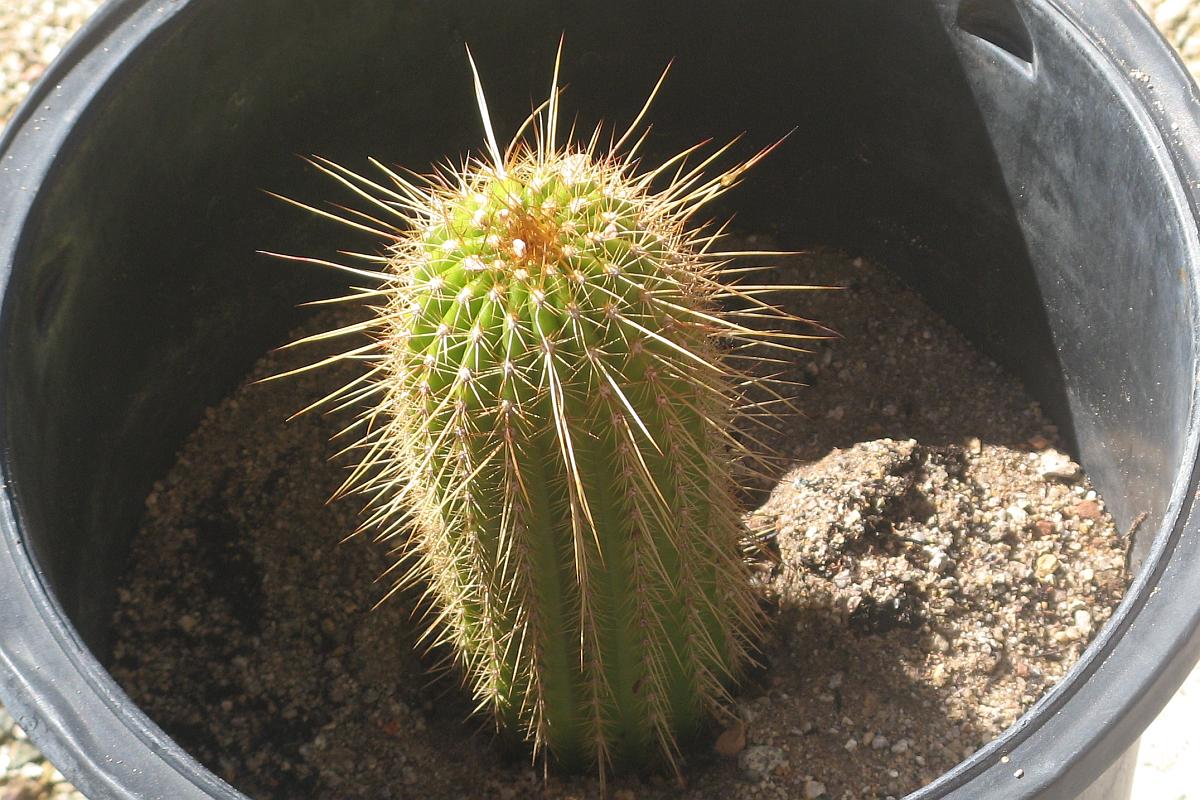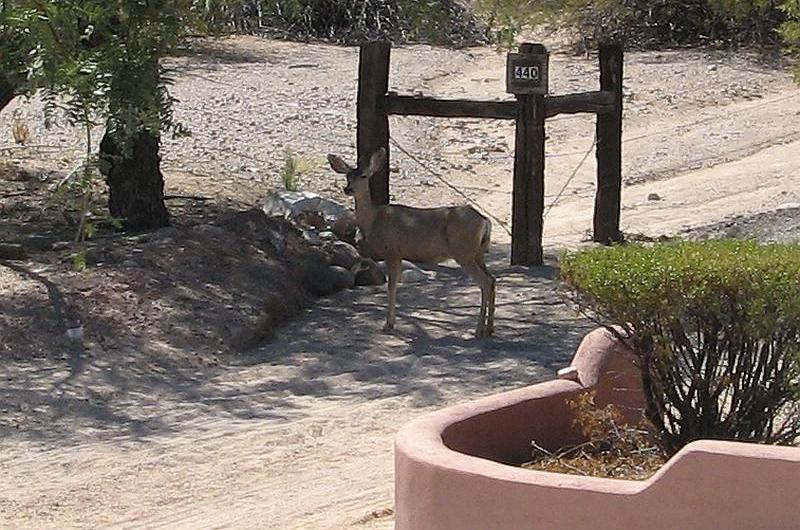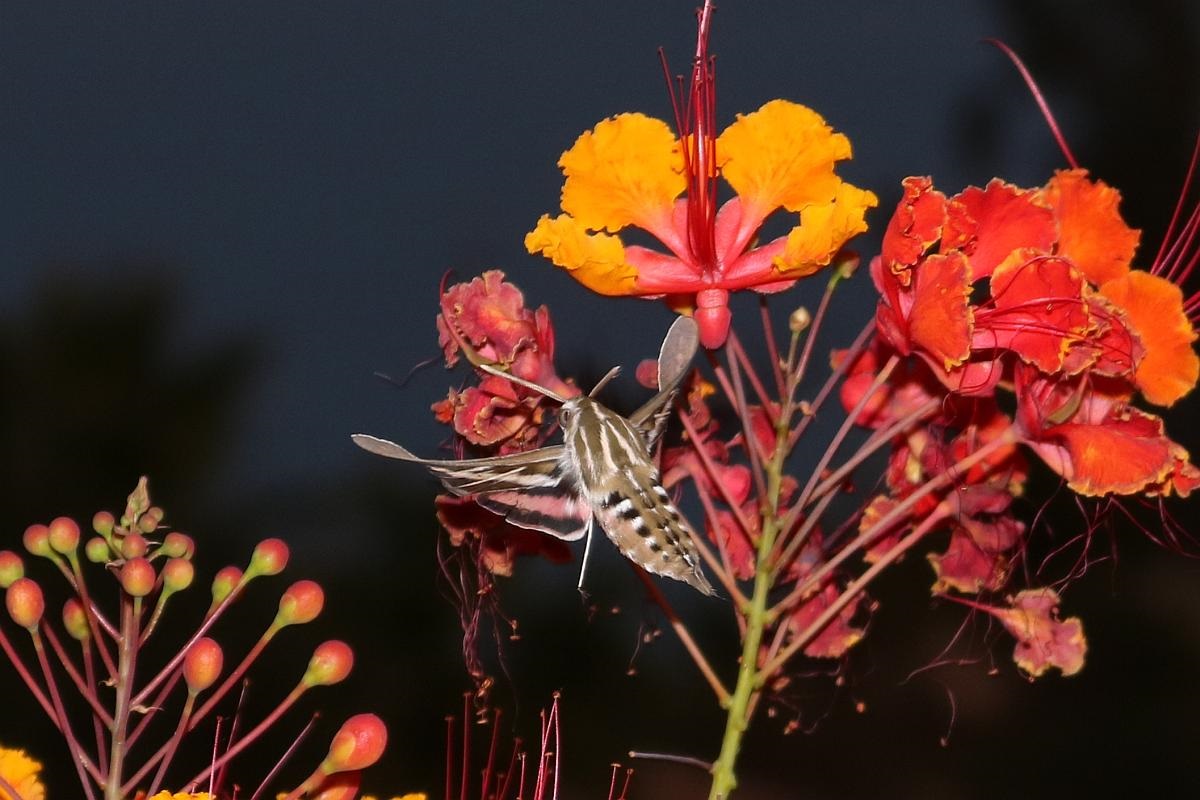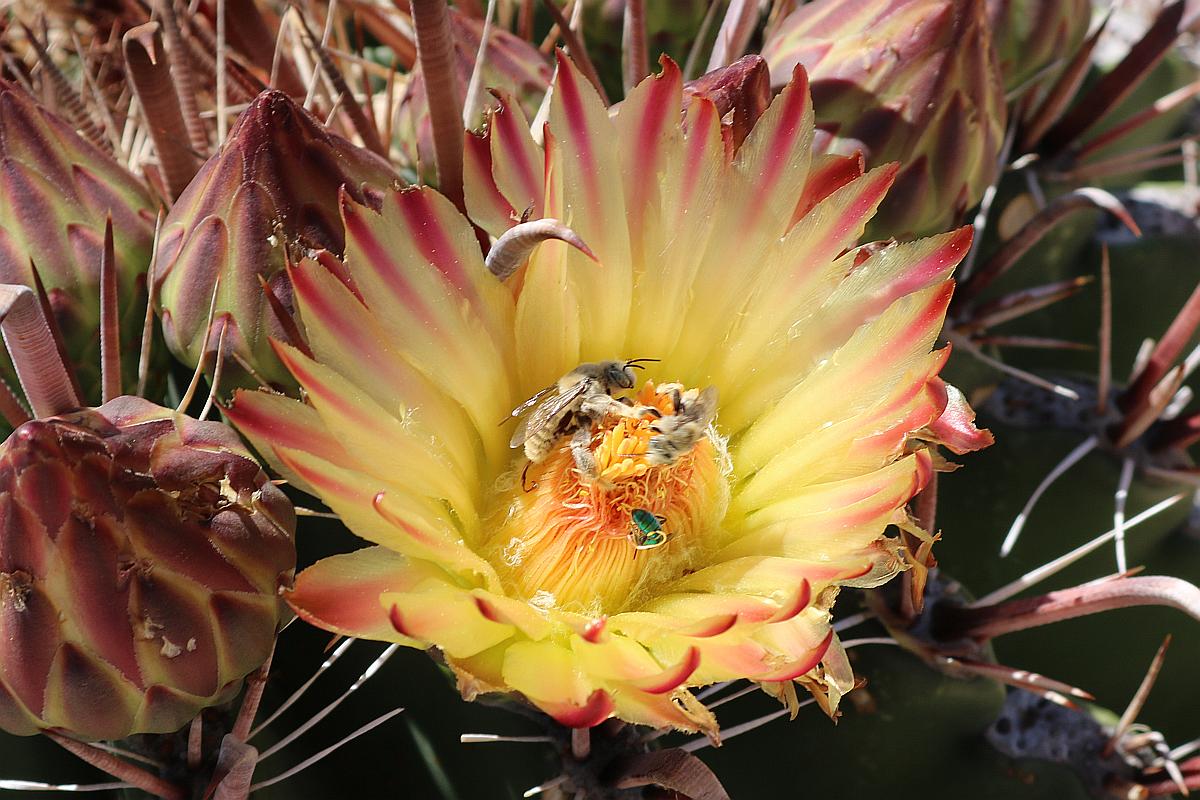Today was our grocery shopping day and, as usual, we stopped at the post office box to pick up the mail. While Bob was in getting the mail, I noticed that a large saguaro cactus across the parking lot had open flowers, some of the first of the season. When we were both back in the truck, we drove across the lot so I could get some photos of the beautiful open flowers on the cactus.
As we got close, we saw a Gila Woodpecker perched by the bunch of flowers on one arm of the cactus. I began snapping shots of the male bird as he browsed the flowers. Shortly after that, the woodpecker flew up the side of the cactus and perched there until the female woodpecker came out of the hole in the side of the saguaro. I was fortunate to get the shots above as the birds did their thing.
Wikipedia has this about the Gila Woodpecker:
The Gila woodpecker (Melanerpes uropygialis) is a medium-sized woodpecker of the desert regions of the southwestern United States and western Mexico. In the U.S., they range through southeastern California, southern Nevada, Arizona, and New Mexico.
They build nests in holes made in saguaro cacti or mesquite trees. Cavities excavated by these woodpeckers in saguaro cacti (known as a “boot”) are later used by a variety of other species, including the elf owl. There, they typically lay 3–4 white eggs, although as many as 6 or 7 have been noted. 2–3 broods are laid a year. Both sexes incubate and feed eggs.
Click on any image to enlarge.

